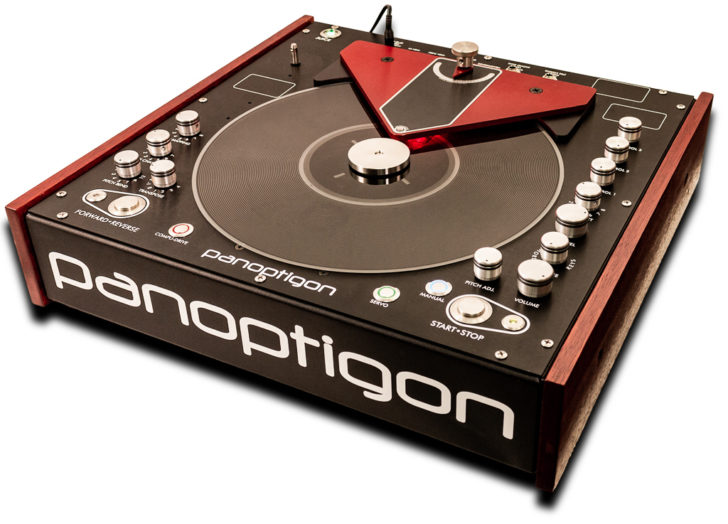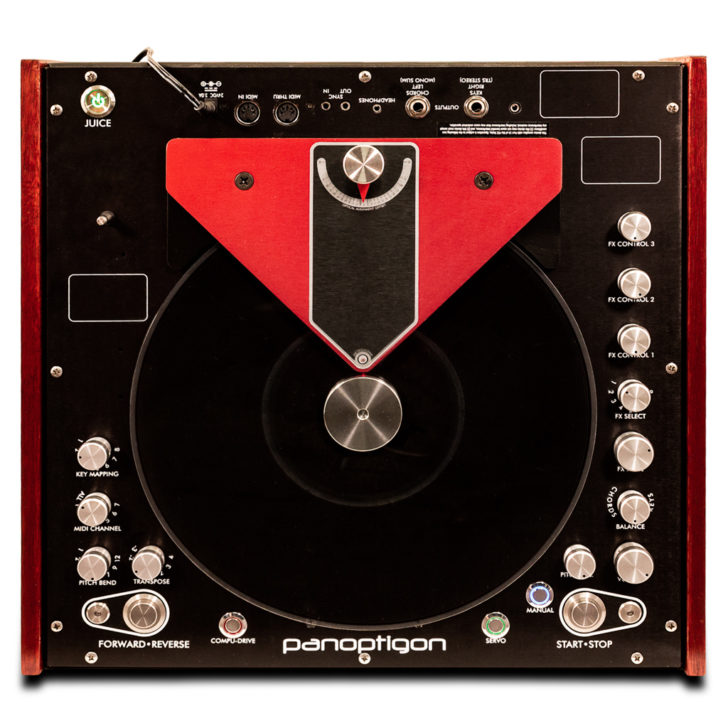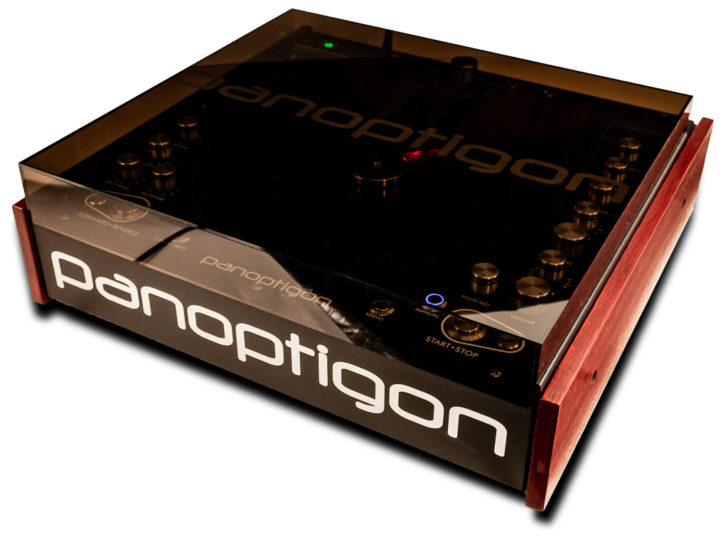At the 2019 NAMM Show, Quilter Labs will officially introduce the Panoptigon, a new instrument that updates the technology of the 70’s Optigan/Orchestron ‘optical organ’ sample playback keyboards.
The boutique sample playback instrument will be available in an initial production run of 25 units, for US customers, in 2019. (The initial run are not approved for Europe, due to additional requirements that will be addressed on the next build.)
The Panoptigon can play back vintage and modern Optigan & Orchestron discs, but also goes beyond the capabilities of the original devices.
Here’s a video demo of one of the prototypes:
Quilter Labs will be showing the first two production units at NAMM this year.
Here’s an example of the Panoptigon playing Kraftwerk’s Franz Schubert on a vintage Vako Orchestron Violin disc:
Pricing and Availability
The Panoptig0n will be available for pre-order via Optigan for US $3,999.




I like the sound but isn’t this just a weirdly inconvenient sample player?
Also when are we gonna get a new Telharmonium? Get on it Behringer! It’s a race to the past!
WHY?????
Was on the fence but that sitar disc sold me. Said no one ever.
lol sitar sells me.
really. awesome!
always excited about “new” sampler technology. Using old techniques in new ways is still new! Think about the automation possibilities…but i wonder if the motor could handle it?
Pretty much out of my budget though… For me, it would need to come with a way of (relatively) cheaply pressing your own discs, i think. i mean, i could imagine stuff like test tones and lock grooves and really modulating them heavily to do wave shaping!
I mean: https://en.wikipedia.org/wiki/Cardboard_record
Or a record of transients would be interestin…
Not sure about the dsp… doesn’t seem that exciting… would like to see rudimentary loop/sound on sound/recorder or something of that nature. Or digital pitch and tune effects on top of the analog….like stick a variphrase -esque processor in there. Or (sub)harmonics generator using an envelope follower to layer additive partials to the sounds.
Wow?
‘test tones and lock grooves and really modulating them heavily to do waveshaping’
I read that and was like hell yeah!, this person is talking about the creative stuff I do with sound a lot!
Then I read,
‘or a record of transients…’
lol what?
I work in milliseconds ALOT and when you really understand the bpm/millisecond recipes you can do endless stuff with just transients. I work in Soundforge and stuff like this is a major part of my sound design and loop creations.
So thank you. Awesome to read maybe some others here are doing or just thinking about similar stuff and techniques that I use when it comes to making sound. ?
PS – digital pitch and tune effects amen! Another tool that I use is vibrato, and then repitching the altered wave to millisecond lengths within the bpm I am working with. I can make insanely extreme complex pitch envelopes with the vibrato designer in soundforge and then repitch them to fit the note values(millisecond durations) of the bpm I am working in. Any transient no matter how short can be pitch shifted, tuned or modulated(vibrato) and then the fun begins lol.
It comes with an extra hand. That’s handy.
It it can get you a foot in the proverbial door…
I love it and want it.
Gimme two, one to scratch with each foot. With a run of only 25 @ $4K each, I don’t think you’ll see even Trent Reznor playing one at center stage. Its so boutique, I checked to see if it was already April 1st.
Given the right sounds and it’s ability to go backwards and at different speeds and pitches, it might have been fun for the Beatles back in the late 60’s, but now… no.
The most expensive piece of novelty gear ever?
I think instead of buying this I will just buy a plug-in or app that can do this and use the rest of the money to go on vacation with my family.
iOptigan app on iOS gets the job done cheaper …
the “Resmatered Cello” is astoundingly realistic – Spitfire Audio eat out your no-longer useful heart
this is amazing. Jon Brion has utilized the original in brilliant ways over the years, along with the Mellotron and Chamberlin making the sound of this synonymous with his work. if i had that kind of cash just laying around i would go for one, i’ll admire from afar.
I love mechanical sound devices and samplers generally. Making a $4000 super optigan is an endeavor in madness, which I can appreciate. On the flip side I’ve always felt that the magic of things like the optigan is that they are cheap and weird and found in unlikely places.